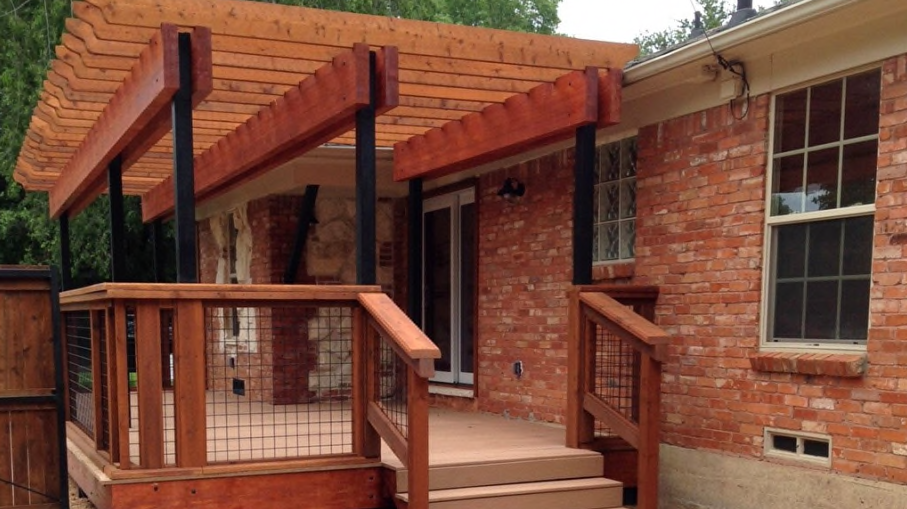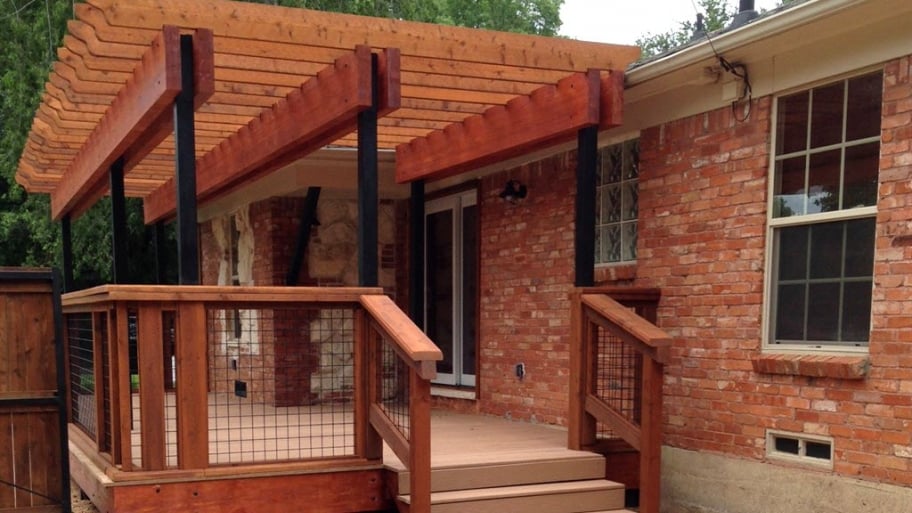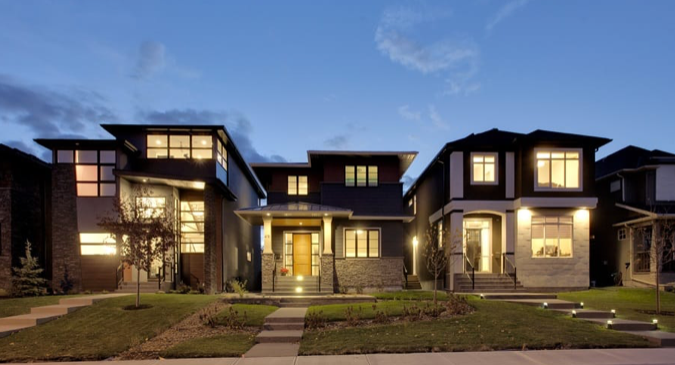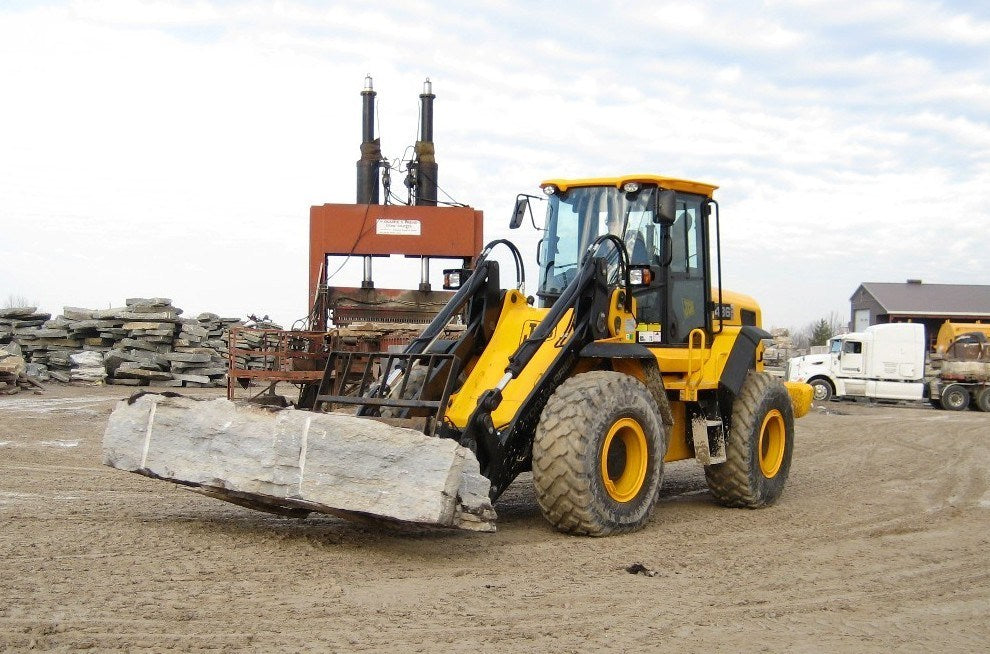
Brick and Stone Exteriors
The two materials cost more, but add long-lasting value to your home.
Generally considered the highest quality choice for home exteriors, brick and stone are also almost maintenance free and will last as long as the house, though some repairs may be needed from time to time.
Advantages
Timeless and refined, a brick or stone exterior is one of the best choices for your home. Either material creates a fire-resistant covering that will increase the value of your home. Research has shown that brick effectively lowers heating and cooling costs by as much as eight percent. It can withstand high winds and is not typically damaged by hail or other debris that may be blown around in windy conditions. Brick and stone exteriors are also extremely durable and can continue protecting your home well into the next century.
Disadvantages
Brick and stone cost more to install than other home exterior materials and their weight needs to be considered during construction. Once in place they are very solid and inflexible. This makes brick and stone a problematic choice in areas that are prone to earthquakes. Over time, brick and stone will also start to weather, changing their colors slightly. This can make it difficult to match the appearance if the home is later expanded or remodeled.
Cost
Expect to pay between six and twelve dollars a square foot for brick siding on your home. Stone siding is even more expensive, costing between eight and fifteen+ dollars a square foot.
Installation
People mistakenly assume brick is waterproof. However, water can penetrate and seep through to the area behind it. It is important that a waterproof barrier be placed on the wall before the brick siding is installed. Brick needs to be installed with a drainage plane or weep holes so any water has an easy escape route. The installation will cost a little more initially, but it will avoid countless problems down the road. You should also find out how the mason ensures that falling mortar won’t block this important drainage system. When brick or stone is added to an existing home originally designed for wood siding, the builder may need to add foundational support to carry the added weight.
Installation issues
In an earlier era of building construction, stone or brick materials often provided the primary support for exterior walls. In modern construction, however, homes are framed in wood while brick or stone facades are attached to the exterior for decorative and weather protection purposes rather than for structural support.
Brick veneers were traditionally attached to wood frame houses, but can be applied over other materials as well. Veneers may be either anchored or adhered. Brick veneer should be 3 to 5 inches thick of an appropriate grade, generally SW brick. Thin brick veneer is between ½ and 1 inch thick and comes in many sizes, colors and textures. Properly constructed, brick veneers add protection to both the exterior and interior of the building. They are fire and moisture resistant and provide thermal and acoustical insulation.
Anchored brick is attached with fasteners to the existing exterior of a house. This creates an air space between the old siding and the veneer that also serves as a drainage channel for moisture. Adhered brick veneer attaches to an existing wall with lath and plaster; these materials resist moisture penetration.
Stone veneers provide decorative and protective attributes to a building’s exterior, as brick does. Stone is also fire-resistant, with thermal and acoustical insulation properties. Stone veneers may be natural or manufactured.
Natural stone veneers are three to five inches thick and can weigh up to 45 to 50 pounds per square foot, requiring a brick support ledge to distribute the weight. Each course of stone supports the next. Additional structural reinforcement may also be required. Masonry ties connect the stone to the wall. Several types of natural stone are suitable for exterior veneers including limestone, sandstone, marble, slate and granite.
Newer technology, like diamond blade cutting, creates thin natural stone veneers that are 1 1/4 to 1 1/2 inches thick, with an average weight of 10 to 15 pound per square foot. Manufactured stone veneers are lighter, usually lower in cost and have a lower waste factor than natural stone. Good quality faux stone looks like natural stone in color and texture. Stone veneers can be applied over any properly prepared surface.
When setting stone, the spacing between stones, size and color of the stone and technique of grout application can create a particular look, like rustic or old world. Both natural and manufactured stone veneers can create the effect of a solid stone wall; however, low-quality materials and poor installation may result in a facade that looks artificial. Thin stone veneers are more difficult to use in detailed work like lintels, corbels and return corners.
Maintenance
Bricks may crack over time, so you still need to inspect your brick home on an annual basis. Small cracks can be ignored, but it might be better to patch them using grout tinted to match the brick. Cracks that grow too large will require the help of a mason to replace the damaged brick. More likely, however, would be the need to replace mortar. It should hold up for twenty-five years or longer, but when cracks and gaps start to appear, you will want to start calling masons for estimates. The damaged mortar should be chiseled out before new mortar is put in place.
Repointing mortar is not as simple as removing the old mortar with a power tool and then slopping in a new mix. Talk to the contractor to ensure he will remove the old mortar to a depth of one inch. The new mortar should also match the existing mortar to ensure proper bonding. This isn’t a big problem for new homes, but it can be a serious issue for historic homes. If your home is older, especially if it is more than seventy years old, consider hiring professionals who specialize in working with older brick.
Source: https://www.angieslist.com/articles/brick-and-stone-exteriors-explained.htm




Leave a comment
This site is protected by hCaptcha and the hCaptcha Privacy Policy and Terms of Service apply.